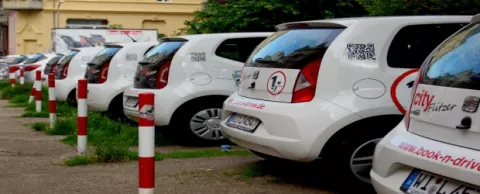
Looking for a way to improve city infrastructure while reducing air pollution? Carsharing may be the solution. Smart Car sharing companies like Germany-based car2go are not only removing up to 11 vehicles for every car used, they're also saving up to 14 metric tonnes of greenhouse gases per vehicle. Germany alone has built up a smart car customer base of over 1 million people since car2go launched back in 2009. Here's how this expansion into the smart car sharing industry is making a significant impact, and why looking into the future of carbon-free, autonomous cars may be just as beneficial if we apply them to the sharing culture. — Bruno De Man
Benefits on and off the road
There are currently over 14,000 car2go vehicles scattered across 26 cities around the globe, with Madrid being the most successful location. In most cities, these cars are being used an average of six to eight times per day, but in Madrid, a single car may be used up to 15 times per day. The goal: the more these shared cars are being used, the less private cars crowding roads and contributing to air pollution and lack of parking spaces. According to a study conducted last year by the Transportation Sustainability Research Center at UC Berkeley in California, carsharing in North America eliminated approximately 28,000 vehicles and reduced up to 146 million driving miles. Carsharing also reduced greenhouse gas emissions by 10 percent.
Smart carsharing
Car2go is already a leader in the world of electric carsharing, with electric-only fleets of more than 1,300 smart cars in Stuttgart, Amsterdam and Madrid. “In the long term we see the future of carsharing as purely electrically powered, but there needs to be a considerable expansion of the charging station infrastructure in many cities to achieve this,” explains Thomas Beermann, managing director of car2go Europe. In addition to charging stations, urban planners will also have to look at parking spaces, both in residential and public areas. Another element to consider is carsharing as an enhancement to public transport, working in collaboration (not competition) with a city’s public transit system. In the future, this mentality may also need to extend to carbon-free autonomous vehicles, who will join carsharing programs. While these vehicles would benefit everything from labour costs to infrastructure and maintenance costs, they would still take up just as much room as a regular car. So if the public isn’t in tune with the sharing culture, this option would still contribute to the issue of road and parking congestion.



